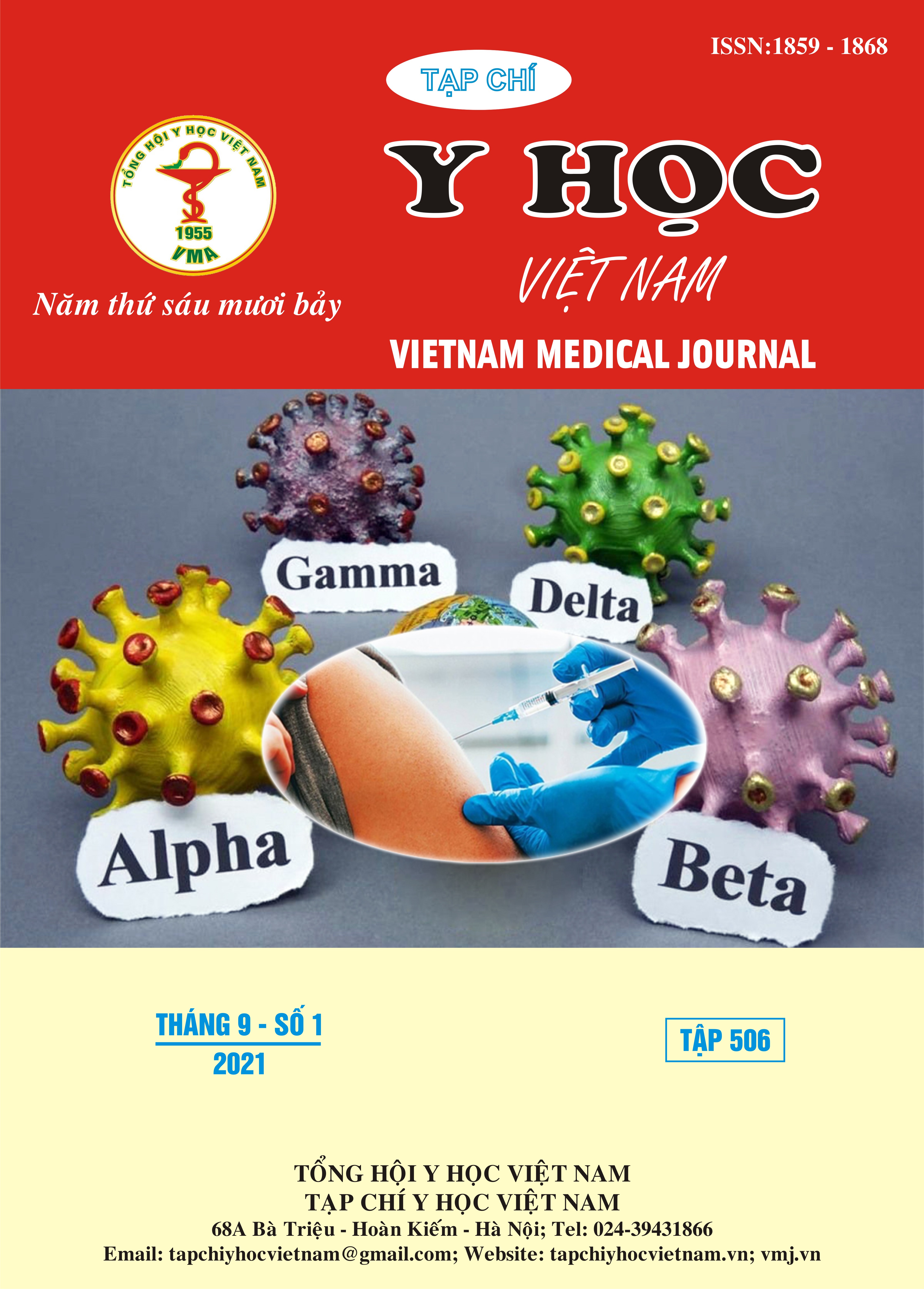ĐẶC ĐIỂM NỘI SOI ĐƯỜNG HÔ HẤP TRÊN TRONG GIẤC NGỦ TẠO RA BẰNG THUỐC TRONG HỘI CHỨNG NGỪNG THỞ TẮC NGHẼN KHI NGỦ
Nội dung chính của bài viết
Tóm tắt
Mục tiêu: Mô tả đặc điểm đường hô hấp trên trong hội chứng ngừng thở tắc nghẽn khi ngủ. Phương pháp: Nghiên cứu in vivo, người đánh giá độc lập, thực hiện trên 12 bệnh nhân có mắc hội chứng ngừng thở tắc nghẽn khi ngủ mức độ nặng qua đo đa ký giấc ngủ. Tất cả mẫu nghiên cứu được nội soi đường hô hấp trên bằng ống nội soi mềm qua đường mũi trong giấc ngủ được tạo ra bằng thuốc gây mê. Đánh giá vị trí, cấu hình xẹp và mức độ xẹp theo phân loại VOTE của Kerizian và cộng sự năm 2011 [1]. Kết quả: Mô tả đặc điểm DISE ở 12 bệnh nhân ngừng thở tắc nghẽn khi ngủ mức độ nặng (có chỉ số AHI 53.18±15.75/giờ, Chỉ số khối cơ thể 25.33±1.95 kg/m(2), tuổi 45.75±13.53 tuổi, tỷ lệ nữ:nam là 1:2) trước khi lựa chọn kế hoạch phẫu thuật. Qua phân tích có tới 7 bệnh nhân (58.3%) có xẹp nhiều hơn một tầng tại đường hô hấp trên và bệnh nhân xẹp đa tầng có chỉ số AHI và BMI cao hơn bệnh nhân xẹp đơn tầng có ý nghĩa thống kê với p<0.05 (56.54±16.67 so với 51.64±16.39 và 25.83±1.75 so với 24.98±2.14) và các vị trí xẹp nắp thanh thiệt hay xẹp họng miệng, màn hầu, đáy lưỡi có chỉ số AHI khác biệt và sự khác biệt về tuổi và chênh lệch giới giữa nhóm bệnh nhân xẹp đa tầng và đơn tầng không có ý nghĩa thống kê (p>0.05). Kết luận: Việc thực hiện DISE phát hiện tỷ lệ xẹp đa tầng tại đường hô hấp trên ở bệnh nhân ngừng thở tắc nghẽn mức độ nặng là cao. Do vậy, chúng tôi đề xuất DISE là công cụ lựa chọn đánh giá đường hô hấp trên cho những bệnh nhân ngừng thở tắc nghẽn mức độ nặng có chỉ định phẫu thuật.
Chi tiết bài viết
Từ khóa
Nội soi đường thở khi ngủ, phẫu thuật hội chứng ngừng thở tắc nghẽn khi ngủ, đánh giá đường hô hấp trên khi ngủ, thuốc trong nội soi
Tài liệu tham khảo
2. SeppäJM Tuomilehto HP, Partinen MM, et al (2009). Lifestyle intervention with weight reduction: first-line treatment in mild obstructive sleep apnea. American Journal Respiratory Critical Care Medicine, 179(4):320.
3. Zaghi S Certal VF, Riaz M, et al (2015 ). Hypoglossal nerve stimulation in the treatment of obstructive sleep apnea: A systematic review and meta-analysis. Laryngoscope, 125, 1254-1264.
4. Blumen M, Bequignon E, Chabolle F (2017). Drug-induced sleep endoscopy: A new gold standard for evaluating OSAS? Part I: Technique. Eur Ann Otorhinolaryngol Head Neck Dis. 2017 Apr;134(2):101-107.
5. Dempsey JA, Veasey SC, Morgan BJ, O’Donnel CP (2010). Pathophysiology of sleep apnea. Physiol Rev. 2010;90:47
6. Salam O. Salman, 2019 Modern Management of Obstructive Sleep Apnea.
7. Kushida C Li KK, Powell NB, et al (2000). Obstructive sleep apnea syndrome: a comparison between Far-East Asian and white men. Laryngoscope, 110, 1689-1693.
8. Palta M Young T, Dempsey J, et al (2009). Burden of sleep apnea: rationale, design, and major findings of the Wisconsin Sleep Cohort study. Wisconsin Medical Journal, 108(5), 246-249
9. Vanderveken OM, Maurer JT, Hohenhorst W, et al (2013) Evaluation of drug-induced sleep endoscopy as a patient selection tool for implanted upper airway stimulation for obstructive sleep apnea. J Clin Sleep Med. 2013;9(5):433-438.


